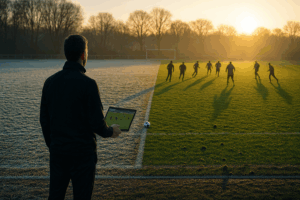
Defense is the foundation of every successful football team. Although offensive moves and spectacular goals often take centre stage, it is the defense that often makes the difference between winning and losing. Defensive strength is not only shown in the ability to prevent goals, but also in the interaction of the entire team. A strong defense requires not only physical ability, but also mental strength, tactical understanding and teamwork.
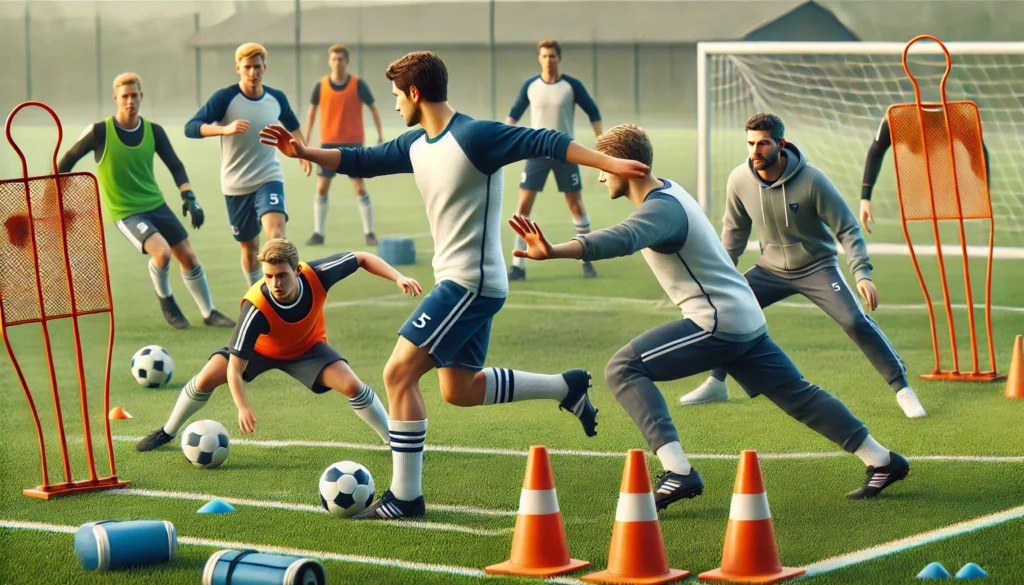
The one-on-one duel is the ultimate test for every defender. It's not just about stopping the opponent, but also about winning the ball without risking a foul. The key principles of individual defense are:
Anticipate body deceptions: Good defenders recognise the attacker's intentions early on. With the right timing and forward thinking, they can intercept the ball or force the attacker to make mistakes.
The right angle: The defender must always act at an angle that either pushes the attacker out of bounds or forces them to make an imprecise move. The defender should orientate his body in such a way that he remains flexible enough to be able to react quickly.
Active footwork: Constant movement of the feet is crucial in order to be able to follow the opponent's quick changes of direction.
Positional play in the defensive line is crucial in order to close down spaces and keep the opponent away from the goal. There are several basic principles in team defense:
Compact formation: The defensive line must remain compact at all times in order to block passing lanes and create superior numbers. The closer the defenders are together, the more difficult it is for the opponent to find gaps.
Shifting in the block: If the ball is played to the side, the entire defensive formation shifts to the ball side together. The opposite side is not neglected, but secured by a wide shift.
Double the opponent: One defender actively attacks the player in possession of the ball, while a second player protects him. This prevents dangerous passes as well as intercepting possible counter-attacks by the opponent.
Another important aspect of defensive work is switching from attack to defense and vice versa. Quick switching determines whether the defense is able to prevent counter-attacks or win the ball in dangerous areas.
Reaction time: Defenders must immediately return to their defensive position after losing the ball and close down the pitch to prevent counter-attacks.
Counter-attack protection: Players who are not directly on the ball in attack must always think defensively and position themselves in such a way that they can react quickly if the ball is lost.
Now that the theoretical foundations have been laid, let's move on to advanced training exercises aimed at improving the principles mentioned above. These exercises are suitable for different defensive situations and can be adapted to individual or collective skills.
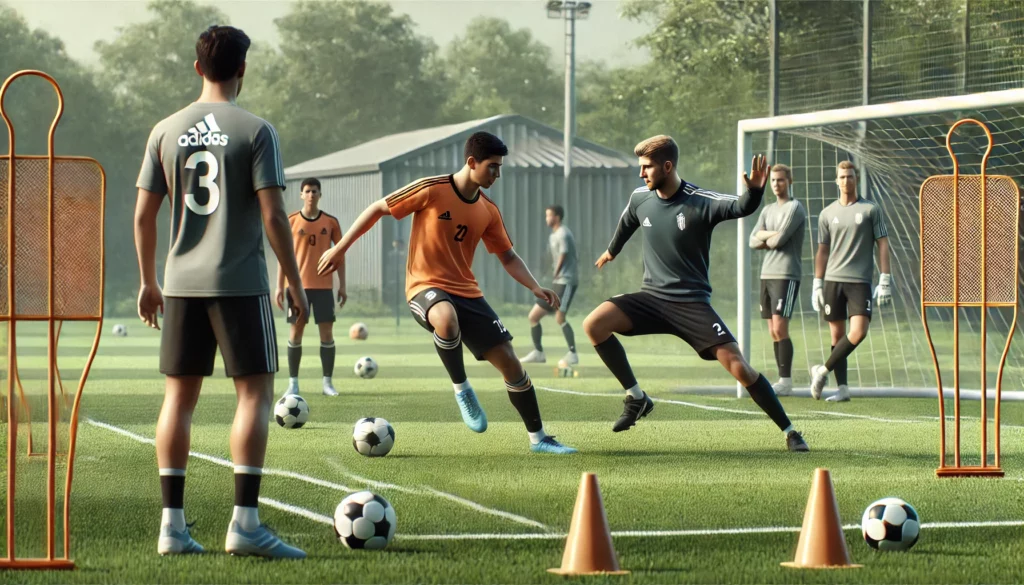
Objective: To improve anticipation, positional play and tackling in tight situations.
Set-up:
Procedure:
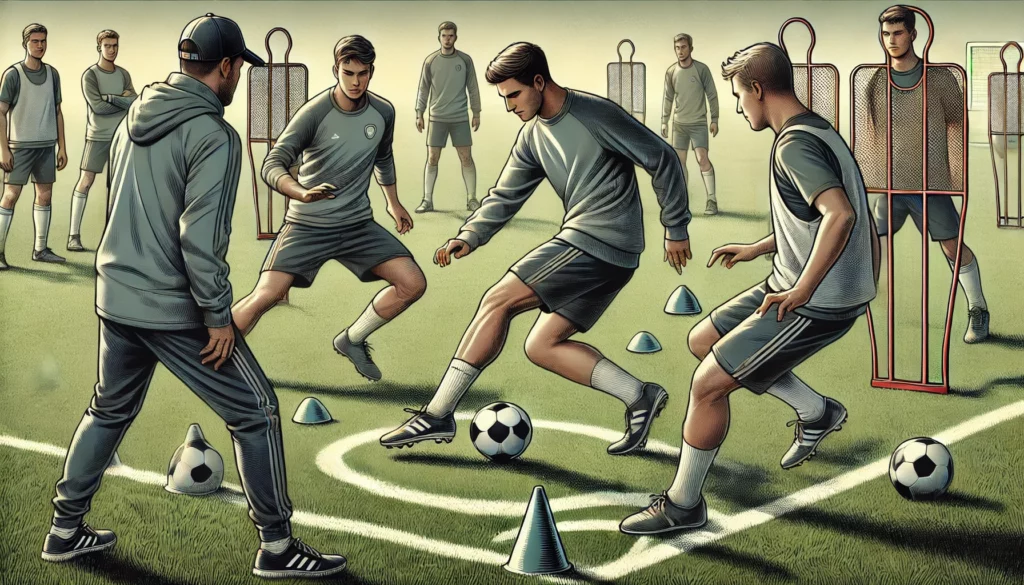
Objective: To improve communication and co-operation in small group situations.
Set-up:
Procedure:
Aim: To improve defensive teamwork and the ability to close down spaces and practise switching play.
Set-up:
Procedure:
Focus: This exercise trains defending when outnumbered, the ability to keep the space compact and switching play.
Objective: To improve collective shifting and the positioning and tackling behaviour of the defensive line.
Set-up:
Procedure:
Variation: The attackers are allowed to play in superior numbers or with different passing combinations to challenge the defense.
Objective: Quick switch from attack to defense and immediate protection against counter-attacks.
Set-up:
Procedure:
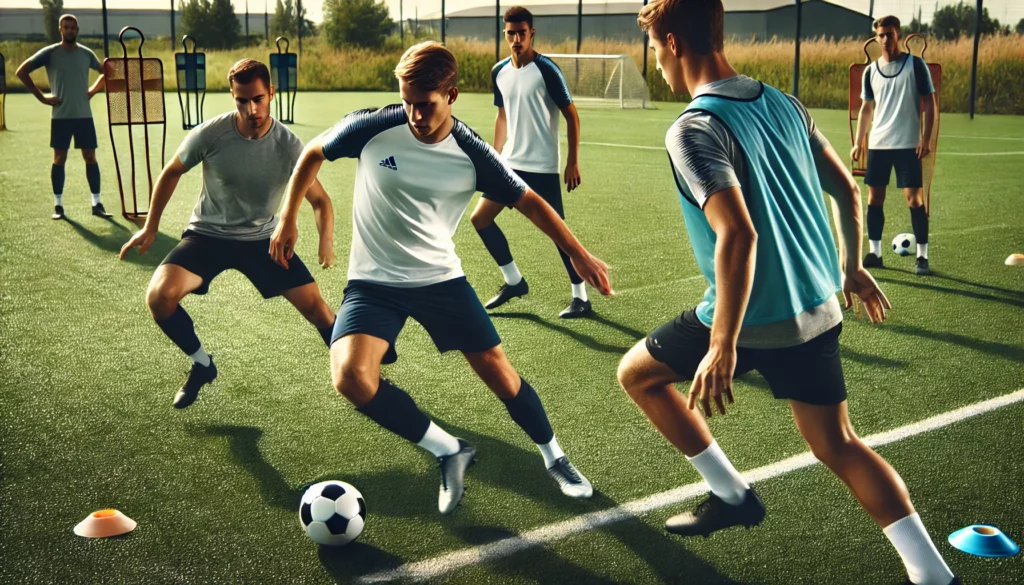
In addition to physical ability, mental strength also plays an important role for defenders. A good understanding of game strategy and the ability to make the right decisions under pressure are essential.
Defenders should regularly analyse games to identify patterns in the opponent's attacks and develop the best defensive strategies.
Defenders must learn to communicate loudly and clearly to direct their teammates and avoid misunderstandings.
Through concentration training, such as visual reaction exercises or quick decision-making tasks, defenders can improve their ability to react and pay attention to the game.
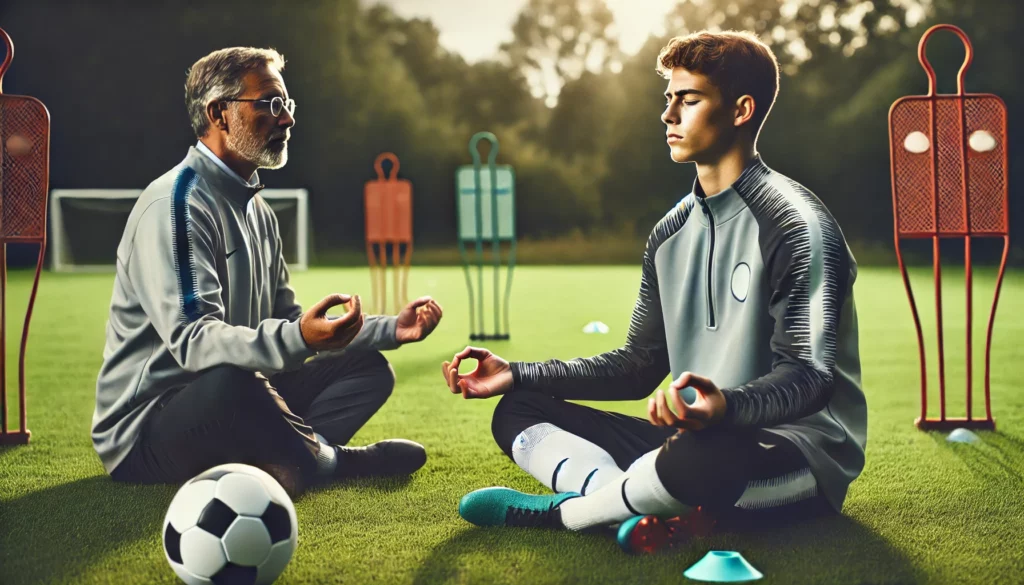
Video analysis is an indispensable tool for improving defensive work in football. It offers an objective way of analysing the behaviour of individual players and the defense as a whole and identifying weak points.
By analysing match situations , defenders can identify their own mistakes, such as incorrect positioning or poorly timed tackles, and work on them in a targeted manner. At team level, video analyses can reveal tactical gaps in the defensive chain or inadequate shifting and can be specifically corrected in training.
By analysing opponent matches, coaches can identify patterns and weaknesses in the opponent's attack in order to better prepare their own team. In this way, the defense can be specifically adjusted to dangerous attackers or certain attacking moves.
Video analysis also highlights positive defensive actions, which boosts self-confidence and helps to further develop the right decisions and game intelligence. Players can use the visual feedback to improve their tactical understanding and react more intelligently to match situations.
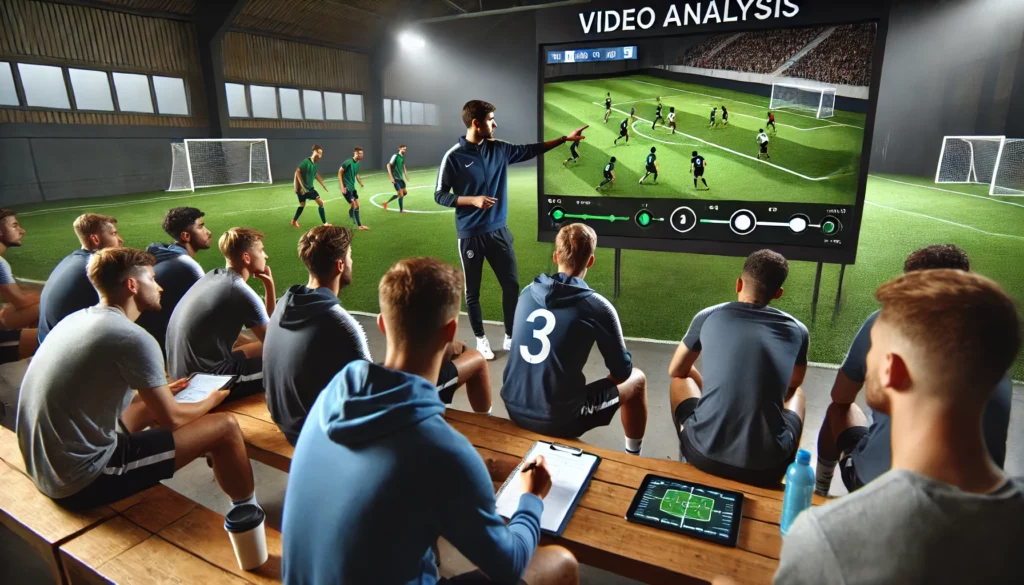
Defensive work is a complex but essential part of football. It requires not only physical skills such as tackling and anticipation, but also a high level of tactical understanding and communication. By regularly practising the exercises presented here - from one-on-one to complex team drills - defenders can take their skills to the next level and give their team the stability it needs.
Effective defensive training should cover all aspects of defensive work: individual skills, interplay in the chain, quick switching and mental strength. This is the only way to make the defense a solid basis for a successful game.